When I started as a freelancer I had no idea B2B writing was an option.
And now?
It’s my biggest source of income.
When I started preaching the benefits of B2B writing inside the Location Rebel Academy, I realized most people didn’t know what it was or how to start.
We wrote this post to fix that.
There’s a huge opportunity for aspiring B2B writers out there. Freelancers are making a lot of money and there are a ton of great, high-quality clients out there in every niche you can imagine.
So here we are.
Table of Contents
How to Become a B2B Writer
Reading not your thing? Get the lowdown here:
In this post, you’re going to learn how to start B2B writing.
What does B2B writing mean?
B2B means business to business.
B2B brands sell products and services to other businesses.
So B2B writing means you are writing for businesses that sell stuff to other businesses. This could be blog posts, white papers, sales copy, internal documentation, or anything else B2B related.
Here are some examples:
- An insurance company sells commercial auto insurance to other businesses.
- A commercial landscaping company sells landscaping services to other businesses.
- A SaaS budgeting tool sells a service to other businesses.
- An industrial office furniture company sells to businesses that need office furniture.
B2B writing is a type of freelance writing. There is no difference between a B2B blog post and one not for a B2B brand except the target audience.
Join over 40,000 people who have taken our 6 part freelance writing course. Sign up below and let’s do this together.
By entering your email address you agree to receive emails from Location Rebel. We'll respect your privacy and you can unsubscribe at any time.
The Most Common Types of B2B Content
Here’s where we start to see people struggle. They think creating solid B2B content is like writing a term paper in astrophysics or something.
Let me assure you, it’s not.
You don’t need years of experience or a special skill set to start B2B writing. All you do need is to spend some time understanding the target audience for that industry.
Here are some common B2B writing jobs you’ll see from brands:
Those should all look familiar to most freelance writers.
Here’s an example of a B2B blog:
Here’s an example of B2B case studies/guides:
And for you non-writers, there are all sorts of B2B content you can create too.
Video, social media, web design, project management, SEO, infographics, slide decks, photography, and designed images are a few examples.
The Benefits of B2B Writing
When I first started freelancing a few years ago I had no idea B2B writing was even a thing.
It wasn’t until I met a few really successful six-figure writers that I realized one common denominator between them. They were all B2B writers.
To say it was a lightbulb moment was an understatement.
The more I dug into B2B marketing the more opportunity I saw.
B2B writing can be a lot more lucrative than other types of writing.
When I made the jump my invoices went from the standard $50, $60, $75 a post you see on a lot of the job boards to $250, $450+, and $1,000+ a post for the same number of words.
So money is the big one. But that’s not the only benefit to this sort of writing.
Here are a few more:
- Work for some big-name brands, great for adding fancy logos to your writer website
- Dig into an area of expertise and explore it
- Build new relationships in an industry
- Embrace the opportunity to expand, maybe you start with blogging but transition into whitepapers and make even more money
It’s also important to keep in mind that outside of the huge brands, most people have never heard of many B2B companies. So that means there’s less competition for you to get your foot in the door.
That’s perfect, especially when you’re getting started.
Industries That Need Freelance B2B Writers
The correct answer is pretty much all of them. There are tens of thousands of small industries and subcategories and niches out there in the B2B world.
Here are a few to get you started:
This is by no means a comprehensive list.
Brands in these spaces need people to help them with their marketing. They need content written, Tweets scheduled, videos edited, and websites designed.
There’s a ton of opportunity. You just have to go out and get it.
That’s what we’re going to cover next.
How to Become a B2B writer (Or, Getting Your Act Together in 3 Easy Steps)
If you want to start finding B2B writing jobs, there are a few things you need to do first.
This isn’t something you want to jump into with zero preparation and no idea of what you’re trying to do because you won’t see success and you’ll get discouraged.
So the next few sections are going to help you get prepared and in the best possible position to start ASAP.
Step 1: Check Your Current Skills and Experience
I see this all the time inside the Location Rebel forums. People forget they had a life and career before they started freelancing.
I know this is a problem because I did it myself.
Prior to freelancing, I was in finance. I worked on mutual funds and hedge funds. Instead of leaning into my years of experience in corporate finance, college education, and internships I ignored it and tried to start fresh.
It was a struggle. I wanted to become a writer but I made a lot of mistakes and wrote a lot for peanuts and didn’t make much money. I was frustrated and I couldn’t figure out what I was doing wrong.
If I were to meet myself on the street today and got into a conversation about writing, I’d say “write about finance, dummy!”
The second I started embracing what I knew and marketed myself as someone who could do financial writing, opportunities opened up.
That’s a lesson I hope you learn right now. Don’t make the same mistake I did and ignore what you already know.
Now, make a list of all your skills and experiences. Here are some places to find them:
Write down anything and everything you know how to do because you should find at least one thing that either was a B2B product or service or applies to any combination of B2B products or services.
I don’t want any excuses so I’ll offer up a few examples for the objections I know are coming:
- Worked in retail? You know something about inventory and point of sale systems
- Was a teacher? You know something about learning models and education technology
- Stay at home mom? You have personally researched and field tested thousands of products
- Admin at cube farm? You know something about enterprise systems and project management
All you have to do is reframe your thinking to include all those little things you worked on, knew, and picked up during your life. Then, figure out where these can directly apply to writing.
Action Step: Create a list of all of your skills and experiences. Highlight the ones that you think can work for B2B. Even better if you enjoyed doing any of them.
Step 2: Find a Niche
Niching down is a big mental obstacle for a lot of people.
They think that if they niche down they are going to miss out on millions of customers and lots of money.
That’s wrong.
I think you can definitely get by without a niche in other types of freelancing. But with B2B writing, I think choosing a niche is important.
Another popular question is what if I pick the wrong niche?
Pick another one. You don’t have to nail your niche on the first try. Most people don’t. You can always shrink it or expand it or find some opportunity that comes and move into an entirely new niche altogether.
Here’s how to think about a niche
Let’s say you’ve got years of experience working as an office manager for doctor’s offices. Here’s some of the stuff you probably did:
- Worked with IT on managing scheduling, invoicing, and payment systems
- Were the point person for biohazard and waste management
- Spoke directly with administrators at major insurance companies
Does calling yourself a B2B writer highlight any of this? Does it give anyone who would be really interested in all your years of valuable experience any idea what you do?
NOPE.
Here’s where the niche matters.
You’re more than just a general freelance writer. You could be a B2B medical IT writer. Or a B2B medical waste management writer. Or a B2B healthcare technology writer. Or a B2B medical office administration writer.
Yes, you’ve just knocked out a ton of potential customers.
But there’s a group of potential clients who wants exactly the kind of experience you offer — and will pay you for it.
So when you’re worried about niching too much as a B2B writer, remember, you don’t need 1,000 clients to be successful. If you have three clients who pay you $2,000 a month to write for them you’re making $72,000 a year. That’s a nice living.
Can you convince three healthcare-related brands out of the tens of thousands out there that you should write for them?
I think so.
This is where you’ll see the benefit of niching as you get into B2B writing. The deeper you can go on the topic, the more opportunity you’re going to see for clients who will pay you a lot of money for that level of expertise.
Action Step: Niche down. Pick a few areas where you can find an entry into B2B writing. Pick a few and get started.
Step 3: Create Your Portfolio
Now the fun part.
If you’ve already got a website up and running, you’re ahead of the game.
If you don’t have a website yet, I’d check out the instructions in this post to help you get a site up and running in the next few weeks.
You can also post up samples on some of these sites. A lot of them will let you put up a limited number of posts for free:
On your freelance writer’s website you need to have a few things:
- A homepage where you tell visiting clients what services you offer
- An about page where you can dig into your skills and experience a bit more
- A sample or portfolio page where you highlight a few pieces of your work
- A contact me page so people can contact you
- A blog if you have no samples (because you can use the blog to create some!)
The most important page on your site (right now) is your sample page.
In an ideal world, you will have a minimum of 3-5 samples in your niche(s) that you can highlight here. If you’ve got more, fantastic.
You don’t have to go overboard and post everything you’ve ever written. But you want to make sure that the samples you do have are related to that niche. So if you want to call yourself a B2B medical technology writer, you need to have all your samples be on that topic.
Pick the best 3-5 samples you have in your designated niche (don’t forget to update as you get more work) and leave it at that.
Last thing and this is important if you don’t have any current B2B samples, you need to write some.
Blog
If you don’t have any samples to start, use your blog to write some.
A few well-written highly relevant blog posts can go a long way. It’s more important to make sure they are good versus posting every week, for this specific type of work, at least.
Finally, when advertising your skills, at least to start, I’d pick a focus and highlight either B2B or B2C (even if you write for both).
For example, I call myself a B2B writer on my site but I do write for B2C clients too, just not as my primary work.
Action Step: Get your website up and running and start creating your portfolio. Here’s a good post on the essentials of a freelance writing portfolio.
Finding those hidden (and not so hidden) B2B writing opportunities
Now comes the time to start compiling potential job opportunities.
First, you need to know where to look.
Where to Start Looking for Freelance B2B Writing Jobs
I’d start with this list of places to find writing jobs online. In it, you’ll find a huge list of potential job opportunities. Some will work well for B2B others won’t.
And here are our six favorite freelance writing job boards for finding high-quality work.
Don’t want to do the digging yourself? Check out Freelancer’s Friend. It’s our premium newsletter where we send you two emails a week each loaded with high-quality, hand-picked freelance writing opportunities.
From there, I’d go to the following spots:
If you want to be in the B2B world, you have to get on LinkedIn.
Like your website, make sure your LinkedIn profile is up to date and highlights your B2B chops and your niche. Put that right in the title.
Learn more about how to get started on LinkedIn here.
You can also share the blog posts that you’ve written on your site on LinkedIn too. That might be a nice way to get some extra eyeballs in front of your work.
Once I started posting sporadically on LinkedIn I started getting attention. Just last week, I signed on for some work with a company that contacted me directly on LinkedIn.
Contently and Skyword
Both of these sites work with tons of B2B brands.
How it works is you sign up for each, and put up your portfolio pieces. Then project managers from the sites will look through profiles and check out pieces, when they find someone who is a fit (usually because of a niche), they’ll add you to the team.
You’ll get assignments from brands, complete them on the platform, and get paid. Sites like Contently and Skyword pay $350+ for posts. I’ve worked with multiple clients on both platforms and have had really good experiences.
You can sign up for Contently here. And you can sign up for Skyword here.
The added bonus for both these sites is you can also use them as free portfolios. The negative is you can’t actively search for jobs on the sites. You set up your profile and wait for them to contact you.
That makes it really important to do a good job creating a profile, mentioning a niche, and picking good samples. You can read some of my tips on how to set up a Contently portfolio.
Next, Tap Your Network
Once you’ve got your stuff set on the sites above, it’s time to start tapping into your current network.
For more on this, you should check out these two posts: How to Find More Freelance Writing Clients and 12 Strategies to Find More Freelance Work.
Clients
That includes past clients and current clients too.
Reaching out to people you’ve already worked with is a great way to get more work. And, with your newfound niche ideas you might be able to squeeze some good content out of a project that could be a great fit for a niche you’d like to get into.
If they don’t have work available, ask them for a referral.
Friends and Family
After clients, head out into the wider world.
Get into all of your networks: friends, family, social media, religious groups, beer softball teams, it doesn’t matter who they are tell them you are a B2B [insert your niche here] writer and you’re looking for introductions.
More often than not, these types of connections can work out because someone knows someone or a friend of a friend who is in marketing is looking for a writer and you’d be perfect.
Build Relationships With Other Writers
Tied in with this is building relationships. This is one of the reasons why becoming a B2B writer can take a bit longer.
But if you cultivate these relationships you can find an incredible source of support as well as referrals too.
Remember, this is not a competition. Other writers should be your friends.
Attend writer conferences, go to writer meetups, and join other writer’s groups. Twitter is a great spot to connect with other B2B writers.
Be helpful and supportive. Make it clear what your niche is, and you might find a nice flow of referral work coming your way.
I know six-figure writers who routinely refer tens of thousands of dollars a work a year to others.
Those are nice friends to have, right?
Working With Agencies
Another source of good writing work comes from agencies. Many marketing, advertising, PR, and communications agencies hire loads of freelance writers to work on client projects.
Here are a bunch of lists of marketing agencies, a ton of them work with B2B writers:
- Clutch.co Agency List
- Themanifest.com Agency List
- Agencylist.org
- Digitalagencynetwork.com Agency List
- Upcity.com Agency List
There are some pros and cons to working with agencies.
The pros are they find all the work for you. You have to do is wait to be called up to work on a project. You don’t have to find any of the clients in the first place. I know some successful freelancers who have 1-2 agencies they work with all the time, getting a new writing job every month or two.
Also, since they have a stable of clients to work with, you can find yourself trying out different opportunities. It could be a great chance to get into a new niche or try a different type of writing.
The biggest con is you get paid less than you would for working directly with the client. For some, that’s a huge negative, for others it’s a fine price to pay for not having to do all the upfront work of landing a client.
You get in touch with agencies by searching them out and sending a pitch or a letter of introduction (LOI). More on this soon.
Work with Brands Directly
Finally, you want to get in touch with brands directly by sending them a letter of introduction (LOI) that showcases some of your expertise and asks if they work with freelancers. Today, B2B brands are increasingly looking for freelancers to write content for them, it’s a lot more affordable than having someone do it in-house.
Again, the key here is to have a list of the right brands to contact. This both helps increase your chances of a yes and doesn’t waste your time.
You’re going to learn how to come up with a list of brands in the next section.
How to Contact Brands for B2B Writing Work
Jennifer Gregory, who runs a fantastic blog and is a very successful B2B writer, shares a really good method for finding clients in her book The Freelance Content Marketing Writer. I suggest you check out her site and book, it’s chock full of awesome information.
Essentially, here’s how it works, remember to pay particular attention to your chosen niche:
- Think of all those skills and experiences you’ve listed above, now include the names of any and every brand you’ve worked with.
- Make a huge list of all the products and services you’ve used in this niche, plus any related products and services you can find that you’d know their target audience uses
- Find brands that are related to those products and services
In reality, it’s pretty simple.
Go through these steps and create a gigantic list of companies. These likely will be a mix of B2B and B2C depending on your niche.
Next, start going through them and making notes:
- Are they a brand you have experience with?
- Do they have a blog? Has it been updated?
- Is there any glaring content that is missing from their site?
- Can you come up with a few ideas that you would make their content better?
This can help remove some brands that are poor fits and highlight some that are great fits.
There will probably be a few that jump off the page for you. Start with these first and work your way down the list.
I’d use Google Sheets or Excel or Airtable to keep track of this list. I’ve been loving Airtable lately, and it’s free.
You can see the top line of my personal content writing business on Airtable:
So this is the list you’re going to work with to start.
You can tweak, update, remove, and add anything. Don’t forget to add your list of agency contacts here too.
And, as you get more familiar with this it’s going to be a lot quicker and easier.
Sending Introductions
By now you’ve got your website good to go, your niche set, and your list of agencies and brands you want to get in touch with.
Here’s what comes next:
Letters of Introduction
These are perfect for agencies especially. A letter of introduction (LOI) is a quick email (seriously QUICK keep it to 5-6 sentences) that tells an agency key information:
- Who you are
- Why you are qualified both in terms of your writing ability and your industry knowledge
- How you write
That is it.
Not your life history.
This is an email just saying hello, I’m a writer who has experience in your industry, and here are a few of my samples, let’s chat sometime.
Here’s an example:
Hello,
Do you work with freelance writers?
I’m a freelance [your niche here] writer. I’ve worked with brands X, Y, and Z creating [stuff you’ve created]. Before starting my writing business, I spent years working in [industries/niches where you worked].
You can see more of my experience on my [LinkedIn, Contently, Website]. And here are [a couple of relevant sample posts].
Hope to connect soon.
You
That is it. Something that is in this sort of feel and tone can work for an LOI. The important thing is to stay relevant to your client list, experience, and samples.
As you get more experience and clients and sample work you can refine this as you go. But one thing to keep in mind is you don’t want to send a finance LOI if you’re talking about real estate, create a new letter for that.
If you don’t have real estate experience, that’s ok, create some sample pieces that tie finance and real estate together, which is pretty simple.
Following Up
Finally, don’t forget to follow up.
This part is super important!
I keep track of all of my pitches.
In my Airtable (which you saw above) I keep track of specific articles or posts that I’ve pitched. This includes the site, the name of the post, my estimated rate, the date, and if the pitch was accepted or not. You can also use a tool like Streak for Gmail to do it too.
Keeping track means you can set a schedule to follow up on your emails.
So, you want to know when you can go back in and send a follow-up email. Which should just be a quick, hey remember me type note. Nothing more than a sentence or two to start.
For this, I love the advice of Ed Gandia from B2B Launcher (he has a great podcast you should check out too). He uses what he calls a “9 word follow up email.”
It basically looks something like this:
Hey Client,
Are you still looking for [blog] content?
Thanks,
You
Use this for all sorts of stuff, anything from standard follow-ups to telling people about new services, sharing a new link they might be interested in, or figuring out your future availability.
There are tons of possibilities.
Last note on follow-ups, well two last notes:
- Don’t barrage people with aggressive follow-ups. I prefer to wait at least a few weeks for the first and then set a schedule.
- Don’t create a new email. Forward the email you originally sent and write your new note at the top.
Alright, we’re almost done.
Rinse and Repeat
What I shared above is going to give you the basic outline to getting started.
Go through this and when you get to the end, do it again. Get yourself into a system where you update your content, refine your niche, and send out LOIs on a consistent basis.
It might be slow going at first, but keep doing it and you will get there.
Now, it’s up to you.
I can’t wait to hear about your first B2B client, so let us know in the comments, and good luck!
Liz Froment
Liz Froment is a full-time freelance writer and the one who keeps Location Rebel running like a well-oiled machine. If she's not writing something informative or witty for her clients, she can most likely be found reading a good book.Join over 40,000 people who have taken our 6 part freelance writing course. Sign up below and let’s do this together.
By entering your email address you agree to receive emails from Location Rebel. We'll respect your privacy and you can unsubscribe at any time.
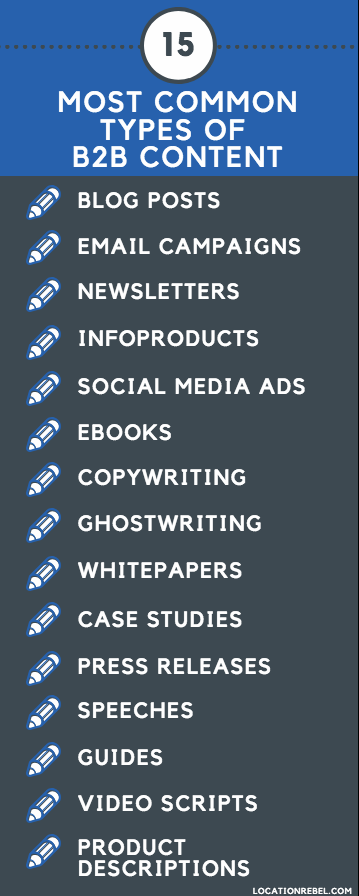
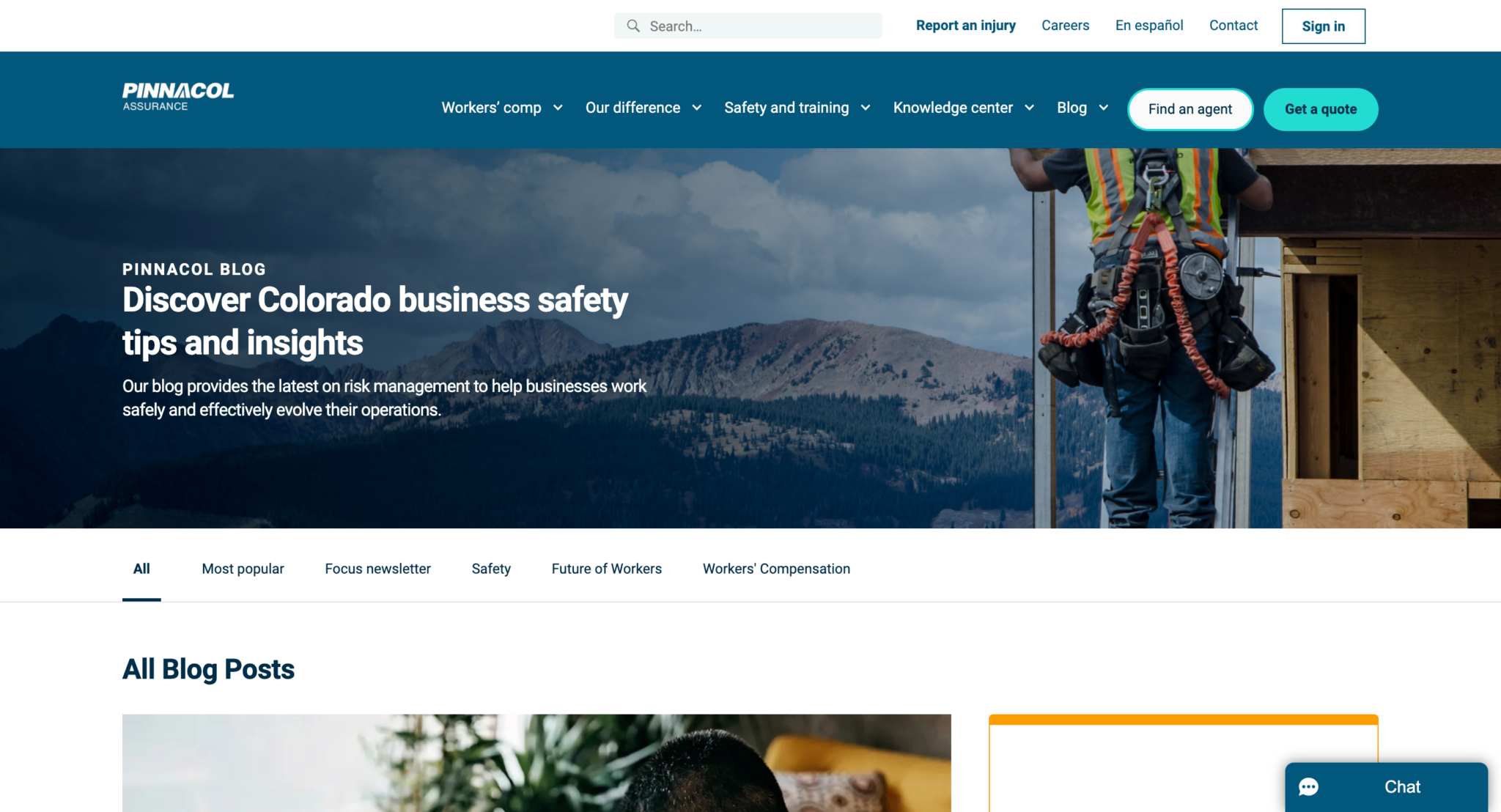
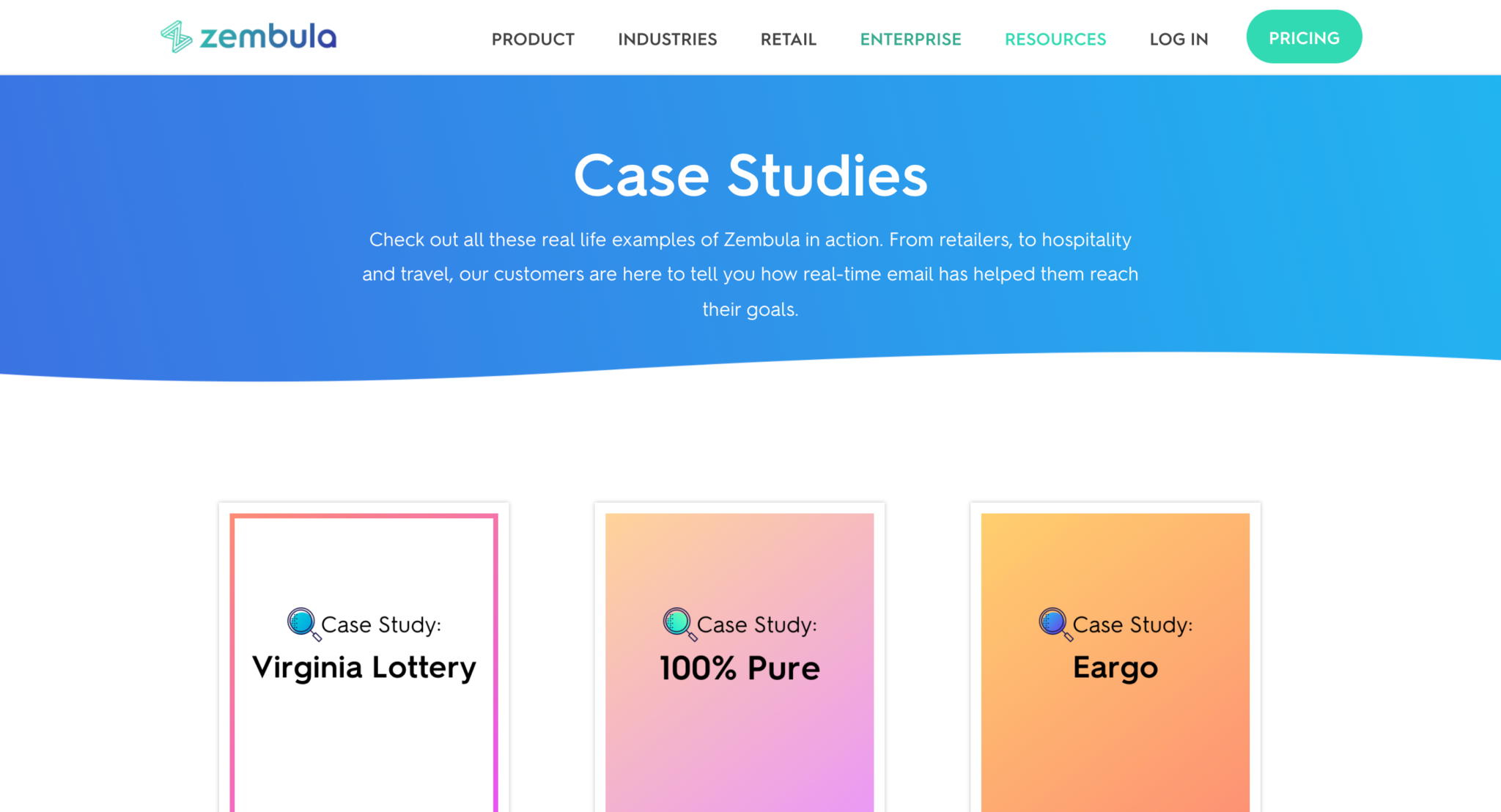
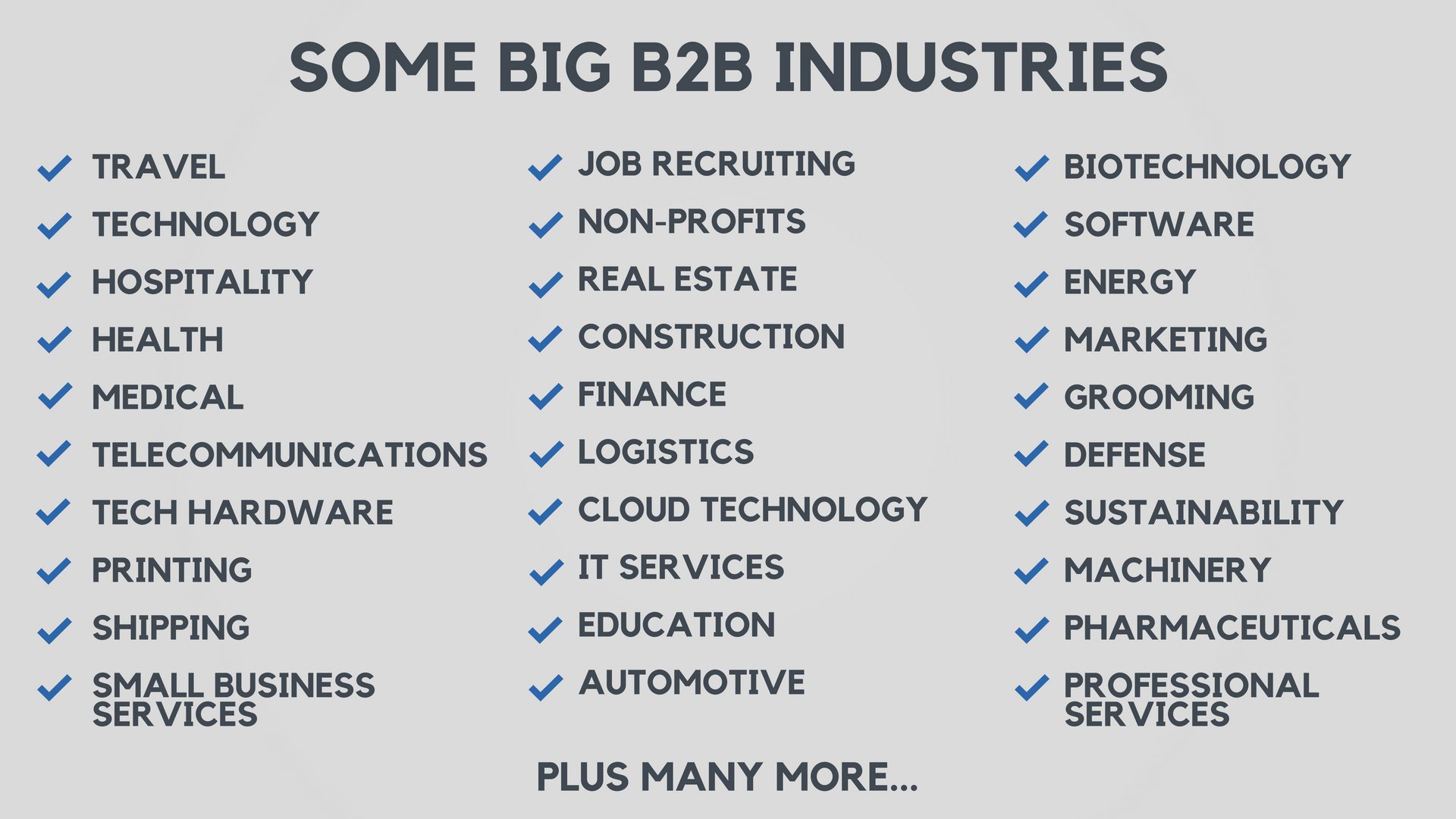
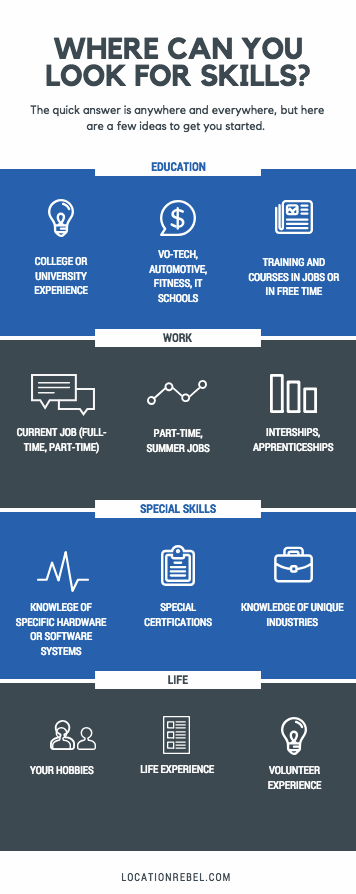

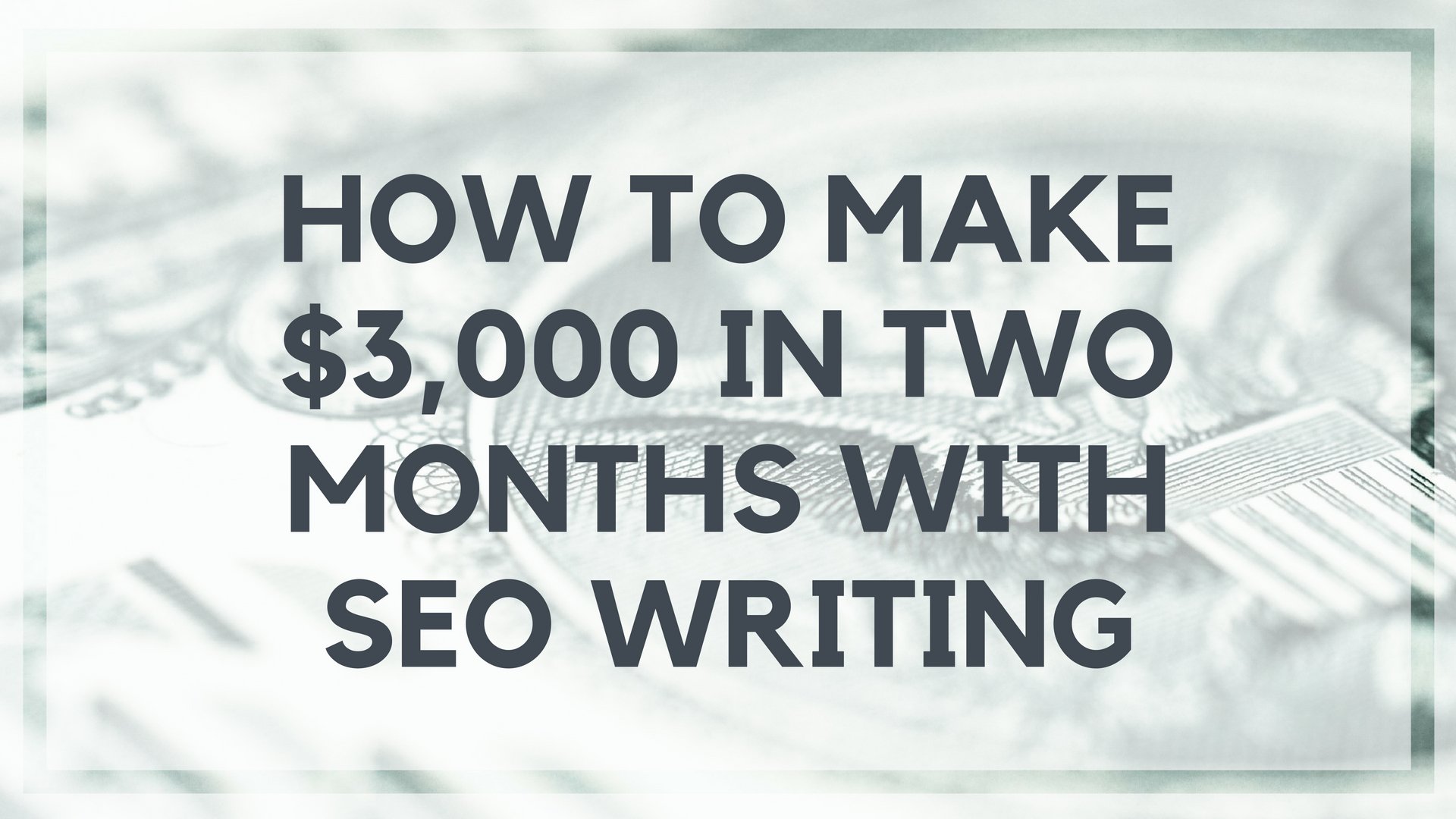


Very informative article Liz, thank you so much!
I have a question: How do you find email addresses to pitch yourself to companies? I’m noticing a lot of potential companies I can pitch to but have no idea who to send an email to, much less pitch one.
thanks!
Hi James,
Ideally, you should be targeting the Chief Marketing Officer or VP of Marketing. Some brands have a Content Director, in which case, that should be your first point of contact. If you can’t find anyone occupying those two positions, reach out to the CEO/Founder, he/she will refer you to the right individual. I hope this helps!
Cheers.
Awesome article! Very informative. I’ve been pulled toward writing for some time now and have been looking to make a career change. This is exactly what I needed to stumble across! Thank you for this. I can’t wait to explore this more and start an all new chapter of my life.
Looking for advice on rates for B2B blog writing. Got my first proposal! Wish me luck!
Key tip, i just discovered answers to a whole bunch of questions about a Niche, starting a blog, website and a whole lot. I hope to get settled in soon.